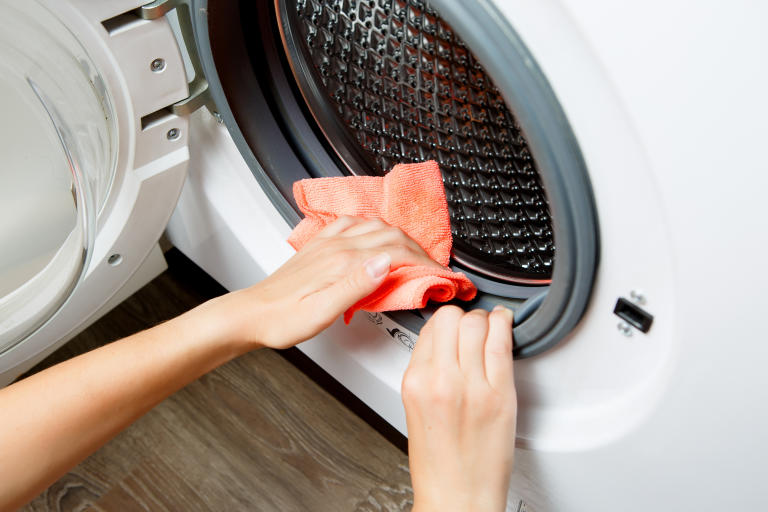- Blog
- Washer and Dryer Maintenance for Long-lasting Performance
Washer and Dryer Maintenance for Long-lasting Performance
May 20, 2024

You buy a washer and dryer to take care of your clothes. But are you returning the favor? Washer and dryer maintenance is essential for ensuring your trusted laundry appliances perform efficiently and last as long as possible. As with any appliance or household investment, regular care not only extends the lifespan of your machines but also saves you from potentially costly repairs and energy inefficiencies down the road. This article will guide you through basic yet comprehensive maintenance routines that can keep your washer and dryer running smoothly.
Understanding Your Appliances
Know Your Model
Every washer and dryer has unique features and maintenance needs. Knowing your model’s specifications can help you apply the correct care procedures and ensure you are following the manufacturer’s guidelines. This knowledge is crucial when ordering replacement parts or explaining your needs if professional repairs are necessary.
Don’t Overlook Your Manual
While often overlooked, the user manual is a vital resource. It provides specific maintenance instructions and safety warnings. For example, the manual will tell you the recommended type of cleaners for your model and any specific operational guidelines that you should follow to avoid damaging your machine.
Routine Cleaning and Care
Ensure your washer and dryer operate efficiently with these essential cleaning and care tips. From drum cleaning to mold prevention, these steps help maintain optimal function and prevent common issues.
Cleaning the Washer
Drum Cleaning: Regular cleaning of your washer’s drum prevents odors and residue build-up. Once a month, run an empty cycle at the highest temperature with a cleaner designed for washing machines. For a natural alternative, use two cups of white vinegar.
Detergent Dispenser: Residue in the detergent drawer can lead to clogs and inefficient detergent use. Remove the drawer every month, soak it in hot water and scrub it clean. Check the nozzles where water flows into the drawer ; these can also be blocked and often need a quick brush to clear.
Mold and Mildew Management: To avoid mold, wipe the rubber gasket and door seals with a cloth dipped in a solution of half water and half vinegar regularly. This is especially important in high-humidity environments.
Maintaining the Dryer
Lint Filter: A clogged lint filter can significantly increase drying times and consume more energy. If you use dryer sheets, scrub the lint filter with a toothbrush and soap occasionally to remove film buildup that can block air flow.
Dryer Vent: Annually inspect the venting system. Detach the hose from the back of the dryer and use a long-handled brush or a vacuum to remove lint buildup inside the hose and vent.
Interior Cleaning: Disconnect the dryer from power and remove the back panel every year to vacuum out the interior. This removes lint that bypasses the filter and can accumulate around the drum and heating elements.
Preventative Maintenance Tips
Keep your appliances running smoothly with regular preventative maintenance. This guide outlines important checks and adjustments to make, such as inspecting hoses and balancing your washer, which safeguard against potential problems.
Inspecting Hoses and Connections
Rubber Hoses: Over time, rubber hoses can degrade, leading to cracks or bulges. Consider upgrading to stainless steel braided hoses for greater durability and less risk of bursting.
Check Connections: Regularly inspect all connections for tightness and signs of corrosion or damage. Ensure that hose fittings are secure to prevent leaks.
Moisture Detection: Look for any signs of moisture or drips under and around your machines. Moisture can indicate slow leaks, which can cause damage over time if not addressed.
Balancing the Washer
Leveling: Ensure your washer is perfectly level to avoid vibrations during cycles, which can lead to noise and wear on internal components. Use a level tool on the top of the washer and adjust the legs as needed.
Locking Nuts: After leveling, tighten the locking nuts on the legs to secure them in place. This prevents the washer from shifting out of balance with regular use.
Regularly Replace Wear Parts
Belts and Pulleys: Check belts and pulleys for wear annually. Replace any belts that show signs of fraying, glazing or obvious wear. Listen for squealing sounds when the washer or dryer is running, as this can indicate a belt issue.
Thermal Fuse: For dryers, the thermal fuse is a critical safety device. Check and replace the fuse if you notice that your dryer suddenly stops working or overheats.
Cleaning Water Inlet Filters
Inlet Filters: Washer performance can be affected by clogged water inlet filters. Remove and clean these filters at least once a year. They can be found where the hoses connect to the back of the machine.
Soft Water Adjustment: If you use a water softener, adjust the detergent usage according to the softness of the water, as soft water requires less detergent.
When to Seek Professional Help
Recognizing Warning Signs
Monitor your washer and dryer for key indicators of problems. Issues such as water not filling the drum properly, clothes staying damp after a full dryer cycle, unusual noises or electrical problems (like the appliance failing to turn on or tripping the circuit breaker) are all signs that professional help may be needed.
Choosing a Repair Service
Selecting the right repair service is crucial. Look for technicians who specialize in your appliance brand, as they will have the most relevant experience. Check online reviews to assess the quality of their services and ask for recommendations from people you trust. Always verify that the repair service is licensed and insured, and prefer those who offer a warranty on their work to ensure you receive a reliable and protected service.
Upgrade Your Laundry Experience with a Lease-to-Own Solution
Ready to upgrade your laundry room but worried about the large investment? With Acima Leasing’s flexible lease-to-own solution, you can take home the latest washer and dryer and enjoy it without using credit*. Relax knowing your lease renewal payment conveniently aligns with your payday. Browse our retailers now to see our wide selection of appliances and learn how easy it is to apply. Start enjoying a new level of laundry efficiency today!
Common Questions
How can I improve the efficiency of my dryer?
To improve the efficiency of your dryer, make sure to sort clothes by thickness and weight, as mixing heavy items with lighter ones can increase drying times. Additionally, always ensure that the dryer is not overloaded and that the vent hose is not kinked or overly long, as this can restrict airflow and increase drying times.
Is it necessary to use distilled water in my steam washer?
If your washer has a steam function, using distilled water can prevent mineral buildup inside the machine. Tap water often contains minerals that can accumulate over time and clog the steam nozzle or cause other functional issues, so distilled water is recommended to prolong the life of your steam features.
What should I do if my washer emits a musty smell?
If your washer starts to smell musty, run an empty wash cycle using hot water and a cup of white vinegar or bleach to clean it thoroughly. Additionally, leave the washer door open between uses to allow the drum to air out completely, preventing mold and mildew buildup.




